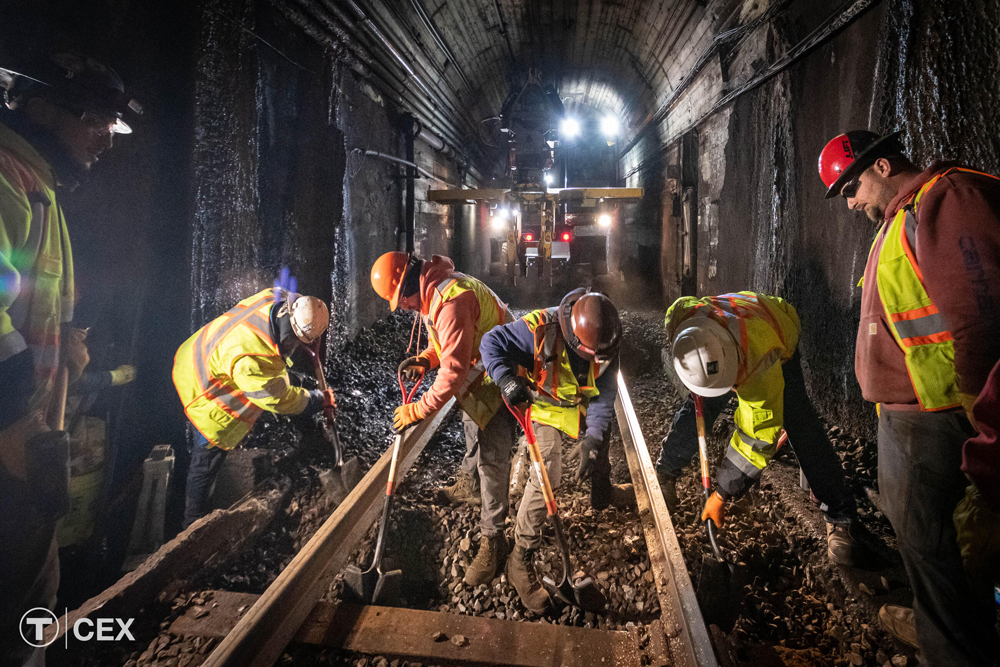
BOSTON — Massachusetts Bay Transportation Authority work on the rapid transit Green Line in February and March removed 11 speed restrictions and made unnecessary a planned suspension of service on the C Branch this fall, the MBTA said on Monday.
The C Branch outage this fall is no longer needed because work eliminated a slow order on the C Branch near Ayr Road and Beach Street. At more than 900 days old, that was the oldest slow order on the MBTA rail system.
The agency also said that a “thorough inspection” determined that no relationship exists between the Green Line work conducted between Feb. 20 and March 8 and the March 9 derailment of a Green Line train near Kenmore Square, which came just hours after the resumption of Green Line operations [see “No injuries reported …,” Trains News Wire, March 9, 2024]. Post-derailment inspection confirmed switches were functioning without defects and that track and switch replacement work had been successfully accomplished and was performing well; the MBTA’s investigation is now focusing on the car that was involved in the incident.
“The incredible amount of work that we accomplished, from tracks to signals to station work, during this 18-day shutdown is a testament to the dedicated workforce committed towards making meaningful improvements,” MBTA CEO Phillip Eng said in a press release. “We took full advantage of this outage and by closely coordinating internally and externally, we maximized the diversion opportunity, getting critical work done. It’s important for all to know that following Saturday’s derailment, we have determined that the track work was completed properly. This was verified prior to reopening the Green Line and recertified post-incident.”
Work performed during the shutdown by MBTA crews and contractors included installation of approximately 13,000 feet of rail; replacement of more than 4,000 feet of restraining rail, 1,300 ties, 1,800 tie plates, 1,500 huck bolt assemblies (which connect restraining rails to running rails) and 2,850 of catenary wire; more than 21,000 linear feet of tamping, nearly 1,500 feet of full-depth track construction; 93 rail welds; switch installation and replacement work; and station and tunnel inspections.
“I’m proud of the work done to date to reverse years of disinvestment but mindful of the work still ahead,” Eng said. “The public deserves a safe and reliable system and we thank them for their patience and support as we continue tackling the challenges ahead to rebuild and restore our infrastructure.”













I worked in that subway for years. It is very old but it was really well built. There of course have been problems but I do not ever recall a major issue with problematic ground conditions.
Looking from afar and not informed of the particular situation, however Boston appears to be challenging. Is there an underlaying cause, such as poor ground conditions due to infilling of wetlands, old landfills? Boston is an old city, construction dates to the 1600’s.
The Ted Williams Tunnel was boredt through all manner of garbage, landfills, shipwrecks, you name it. Ditto much of the rest of the city’s infrastructure, tall buildings, etc. In fact I worked in a building built on landfill on the site of the Boston Tea Party. I’m not aware of any buildings, expressways, whatever, sinking into the slime. You’d think there would be a huge problem but it seems not.